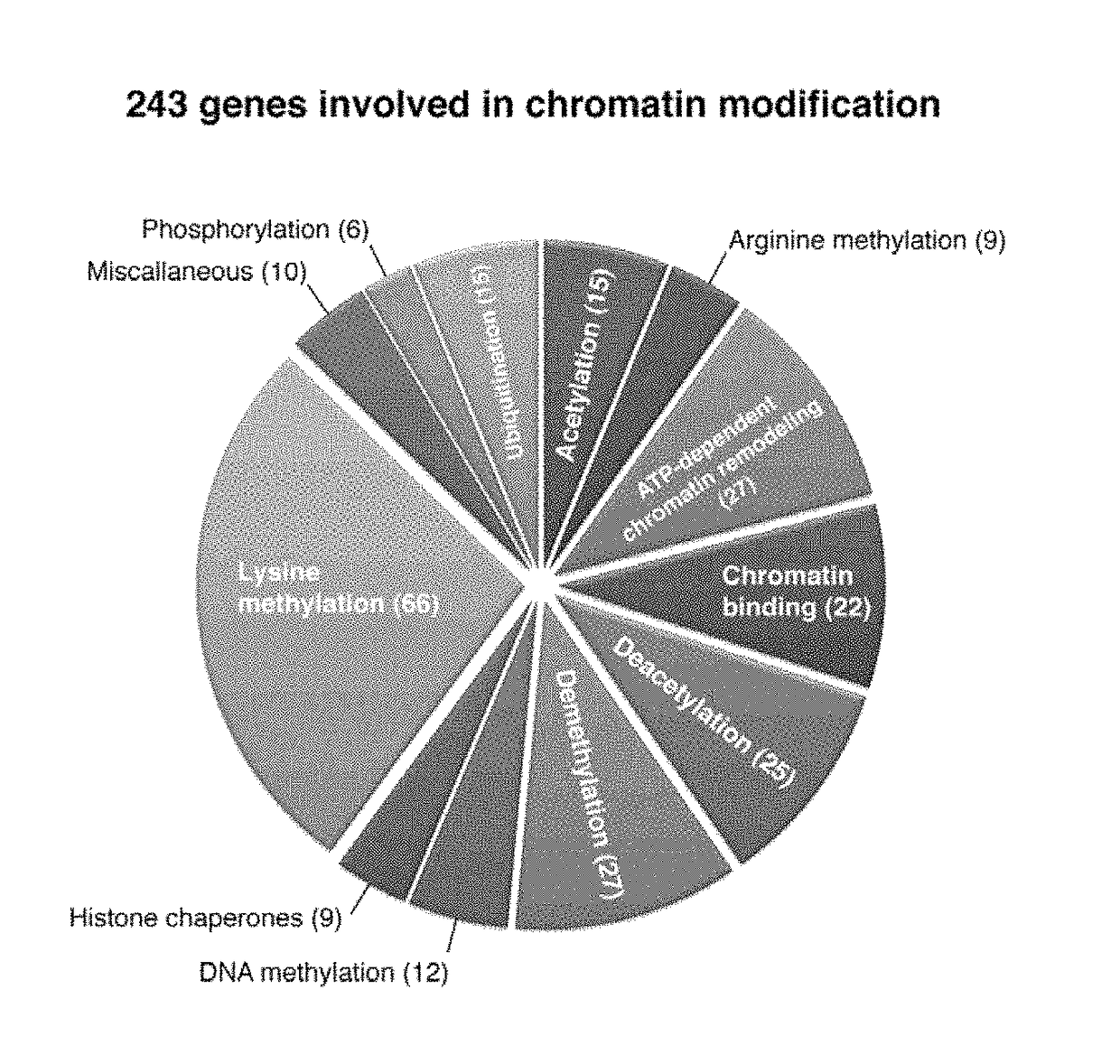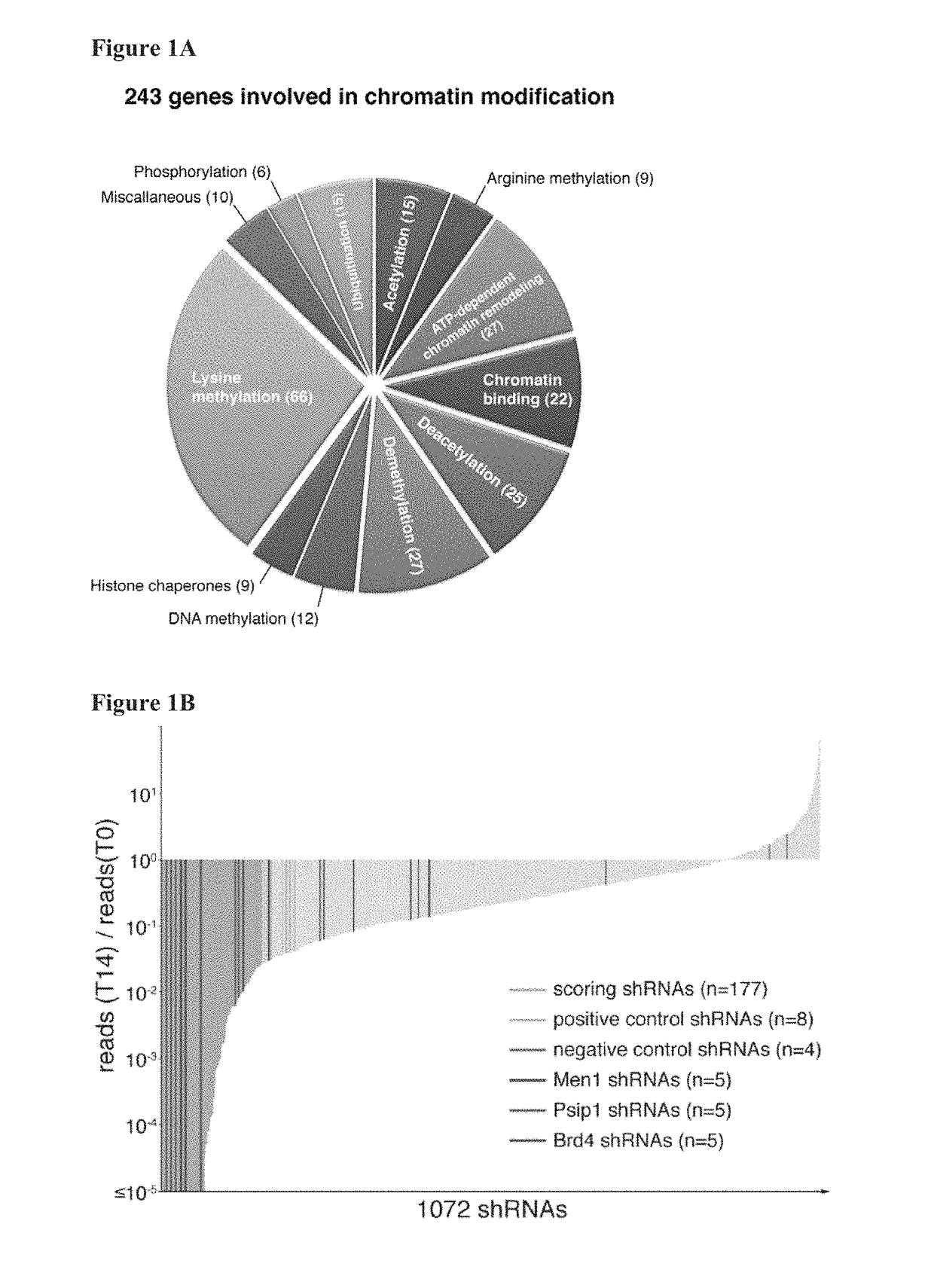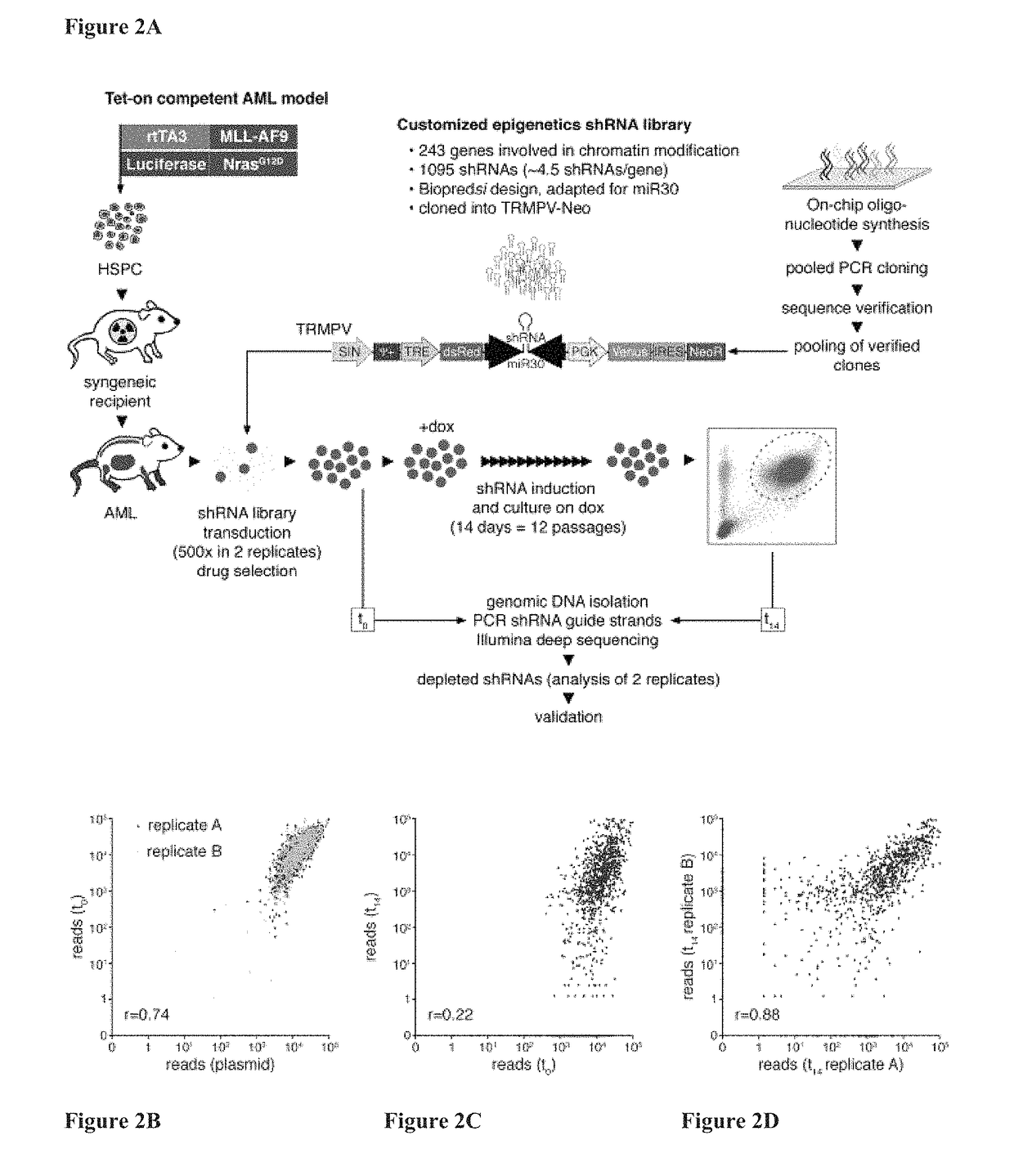Compositions and methods for treating leukemia
a technology for leukemia and compositions, applied in the field of compositions and methods for treating leukemia, to achieve the effect of reducing the growth, proliferation or survival of a leukemic cell
- Summary
- Abstract
- Description
- Claims
- Application Information
AI Technical Summary
Benefits of technology
Problems solved by technology
Method used
Image
Examples
example 1
ritically and Specifically Required for Proliferation of Acute Myleloid Leukemia Cells
[0398]To systematically probe epigenetic pathways required for Acute Myleloid Leukemia (AML) maintenance, a shRNA screen was undertaken. For this, a custom shRNA library which targeted the 243 known chromatin regulators was built. This library included most ‘writers’, ‘readers’, and ‘erasers’ of epigenetic marks (FIG. 1A). This library of 1,095 shRNAs (three to six per gene) was constructed in TRMPV, a vector optimized for negative-selection. RNAi screening. In a primary screen, the library was transduced as one pool into an established Tet-On competent AML mouse model-cell line that included a MLL-AF9 and NrasG12D fusion gene (Zuber et al., Nat Biotechnol 2011; 29:79-83). Following drug selection, shRNA expression was induced by addition of doxycycline (dox). Changes in library representation after fourteen days of culture were monitored using deep-sequencing of shRNA guide strands amplified from ...
example 2
eloid Leukemia (AML) Cell Proliferation is Specifically Blocked by the Bromodomain Protein Inhibitor JQ1
[0400]The effects of JQ1, a first-in-class small-molecule inhibitor of BET bromodomains with highest affinity for the first bromodomain of Brd4 (Filippakopoulos et al., 2010), was tested on a variety of leukemia cell types. Proliferation of mouse MLL-fusion leukemia cells was strikingly sensitive to sub-micromolar JQ1 concentrations as compared to fibroblasts and G1E (FIG. 6B), in agreement with the relative impact of Brd4-shRNAs on proliferation of these different cell types. The growth-inhibitory effects of JQ1 in a series of established human leukemia cell lines as in adult and pediatric primary leukemia samples were also examined Broad growth-suppressive activity of JQ1 (IC50<500 nM) was observed in 13 / 14 AML cell lines, (FIGS. 6C and 7A) and 12 / 15 primary AMLs across diverse genetic subtypes (FIGS. 8 and 9). In addition, 3 / 3 tested primary MLL-rearranged pediatric leukemias w...
example 3
Progression In Vivo is Inhibited by Suppression of Brd4
[0401]The in vivo relevance of Brd4 to AML progression was investigated. To suppress Brd4 in established AML in mice, Tet-On competent MLL-AF9 / NrasG12D leukemia cells were transduced with TRMPV constructs containing anti-Brd4 shRNAs or containing control shRNAs. These cells were then transplanted into secondary recipient mice who had previously been sublethally irradiated. Following disease onset, which was confirmed by bioluminescent imaging, shRNA expression was induced by doxycycline (dox) administration (FIGS. 11A-11F). Subsequent monitoring revealed that Brd4 suppression resulted in a marked delay in leukemia progression and provided a significant survival benefit (FIGS. 12A-12C). Taking advantage of the dsRed reporter linked to shRNA expression in the TRMPV vector (Zuber et al., Nat Biotechnol 2011; 29:79-83), flow-cytometry analysis verified that Brd4-shRNA-positive cells were depleted within the terminal leukemia burden ...
PUM
| Property | Measurement | Unit |
|---|---|---|
| body weight | aaaaa | aaaaa |
| body weight | aaaaa | aaaaa |
| body weight | aaaaa | aaaaa |
Abstract
Description
Claims
Application Information
 Login to View More
Login to View More - R&D
- Intellectual Property
- Life Sciences
- Materials
- Tech Scout
- Unparalleled Data Quality
- Higher Quality Content
- 60% Fewer Hallucinations
Browse by: Latest US Patents, China's latest patents, Technical Efficacy Thesaurus, Application Domain, Technology Topic, Popular Technical Reports.
© 2025 PatSnap. All rights reserved.Legal|Privacy policy|Modern Slavery Act Transparency Statement|Sitemap|About US| Contact US: help@patsnap.com



